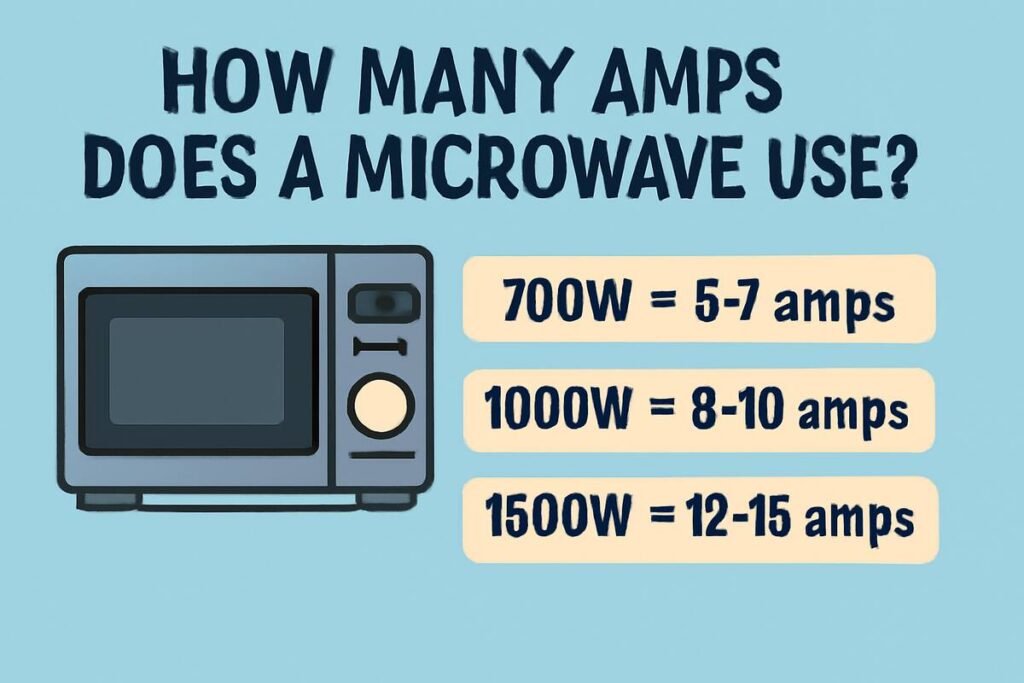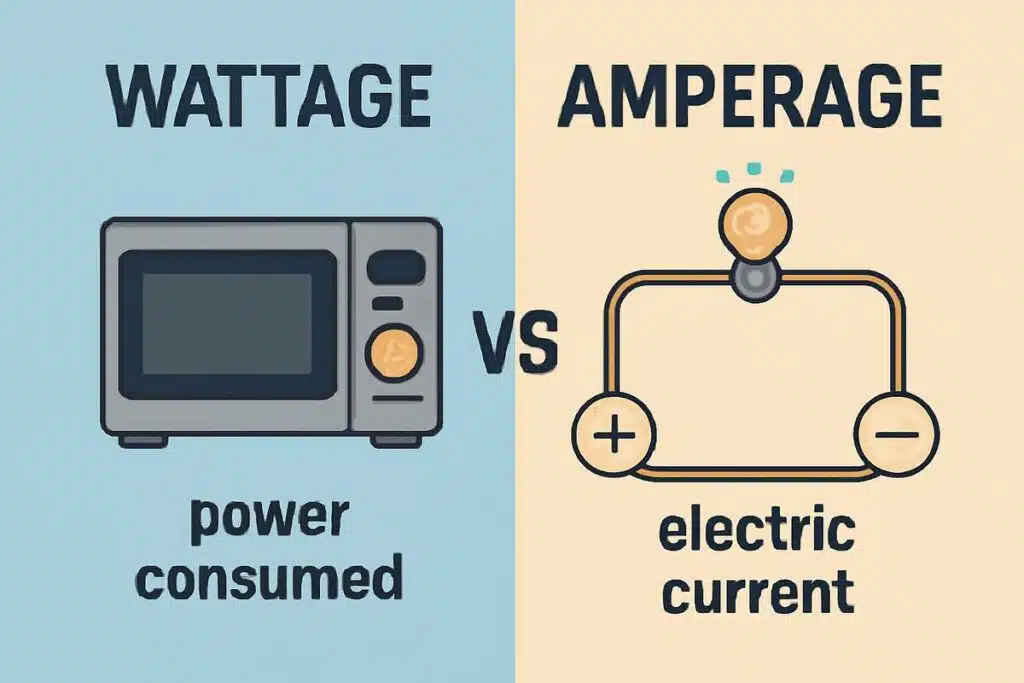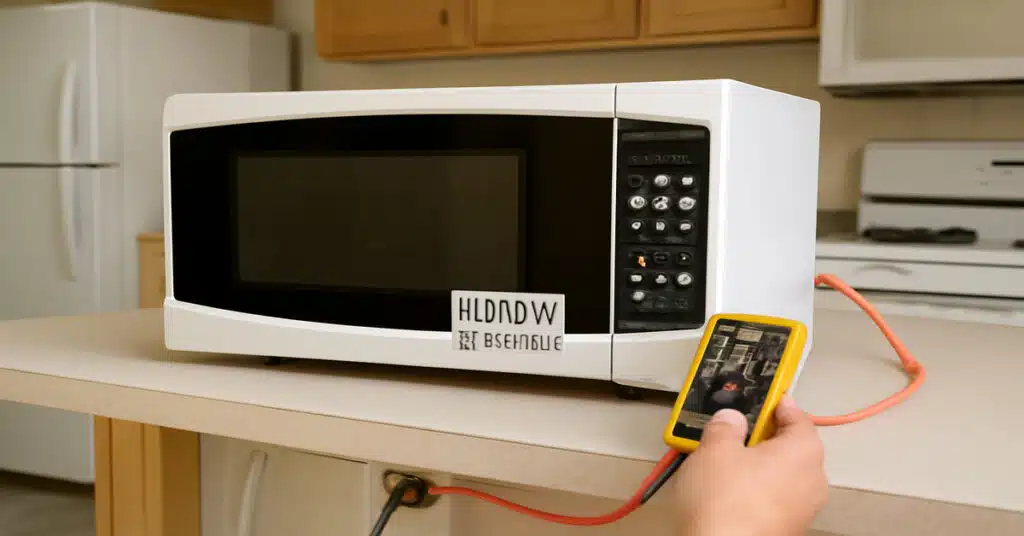When you ask, “How many amps does a microwave use?” You’re addressing an important topic that affects both energy use and safety. I remember when I first got my microwave, I was confused about how much power it really needed. I did not know that matching the right amperage with the microwave’s wattage was essential. Over time, I realized this connection helps prevent electrical issues and saves energy.
For example, a typical 1000-watt microwave uses around 8–10 amps, depending on its efficiency. Using the correct amperage ensures the microwave operates smoothly and avoids overloading circuits. It is not only about cooking faster but also about managing energy better. Whether you are buying a new microwave or adjusting the one you already have, this guide will explain everything clearly, so you can make informed decisions.
How Many Amps Does a Microwave Use?

When you ask, “How many amps does a microwave use?” Understanding the connection between wattage and amperage is crucial. For most standard microwaves, the typical amp range is between 10 and 15 amps, depending on the microwave’s wattage.
For instance, my 1000-watt microwave draws around 8 to 10 amps. But when I upgraded to a 1500-watt microwave, I noticed it drew around 12 to 15 amps. The higher the wattage, the more amps the microwave needs to operate efficiently.
Here is where my personal experience comes in: After upgrading to the 1500-watt microwave, I did not consider the fact that it would pull more amps than my previous one. A few days later, I noticed the circuit breaker tripping more often. That is when I realized the microwave needed more amps, and I had to adjust the circuit accordingly.
Understanding microwave amperage is essential because it helps prevent overloads and ensures your appliance runs safely without affecting your home’s electrical system.
How Many Amps Does a Microwave Pull?
When we talk about how many amps a microwave “pulls,” we’re really asking about how much current it draws during operation. From my experience with both 1000W and 1500W microwaves, I’ve seen the amp draw range from 8 to 15 amps, depending on wattage and efficiency. Always check the label and make sure your circuit matches the demand.
Microwave Amp Usage Chart by Wattage
When shopping for a microwave, it is important to understand how its wattage affects its amperage. The higher the wattage, the more amps the microwave will need to operate. Here is a simple chart that compares microwave wattage with the corresponding amp usage:
| Microwave Wattage | Amp Range |
| 700W | 5–7 amps |
| 1000W | 8–10 amps |
| 1500W | 12–15 amps |
For instance, when I upgraded from a 700W microwave to a 1000W model, I noticed the amp draw increased, which helped me understand why my circuit breaker tripped once or twice. A higher wattage microwave draws more amps to work efficiently.
Before buying a new microwave or checking the one you currently have, always check both the wattage and the amps it draws. This ensures that your microwave will run properly and will not overload your home’s electrical system, keeping everything safe and efficient.
Microwave Amp Draw by Wattage Size
The amp draw increases with microwave wattage. Here’s a quick reference:
| Wattage | Approx Amps | Circuit Needed |
| 600W | 5 A | 15 A |
| 700W | 6 A | 15 A |
| 1000W | 8.3 A | 15 A |
| 1100W | 9.1 A | 15 A |
| 1500W | 12.5 A | 20 A |
➡️ From personal experience, going from a 700W to a 1500W microwave required me to upgrade from a 15A to a 20A breaker to stop tripping the circuit.
How Many Amps for a 700-Watt Microwave?
A 700-watt microwave typically uses 5 to 7 amps on a 120-volt circuit. It’s considered a low-wattage model, so a 15-amp circuit is usually sufficient. Just make sure no other high-draw appliances share the circuit to avoid overloads.
How to Calculate Microwave Amps?
Calculating how many amps your microwave uses is easier than you might think. Let me show you how to do it step by step. I have gone through this process myself when upgrading my microwave, and i will share my personal experience to make it simple for you.
Step 1: Know Your Microwave’s Wattage and Voltage
The first thing you need is the wattage of your microwave and the voltage of your home’s electrical system. In the U.S., most microwaves use 120 volts, but some larger models may use 220 volts.
For example, my microwave is rated at 1000 watts, and it runs on 120 volts.
Step 2: Use the Formula
To calculate the amps, use this simple formula:
Amps = Watts / Voltage
So, for a 1000-watt microwave using 120 volts, the calculation would look like this:
Amps = 1000 watts / 120 volts = 8.33 amps
This means that your microwave uses about 8.33 amps of power. Knowing this is helpful because it ensures your circuit can handle the load.
Step 3: Double-Check Your Circuit’s Capacity
From my own experience, i have learned that matching the microwave’s amperage with the electrical circuit’s capacity is crucial. If your microwave pulls too much power, it could trip the circuit breaker. For instance, a 15-amp circuit is fine for a 1000-watt microwave, but a 1500-watt microwave might require a 20-amp circuit.
So always make sure to check both your microwave’s wattage and voltage and use the formula to calculate the amps. This way, you avoid overloading your circuit and prevent electrical issues.
Calculating your microwave’s amps is easy once you understand the relationship between wattage, voltage, and amperage. With this simple math, you can ensure your microwave operates safely and efficiently while saving energy.
What Size Breaker Do You Need for a Microwave?

Choosing the right breaker size for your microwave is crucial to prevent electrical overloads. If the breaker is too small, it can trip frequently, or worse, cause hazards. From my own experience, i have learned that the breaker size should match the microwave’s wattage and amperage.
For example, my 1000-watt microwave uses a 15-amp breaker, which is usually enough for microwaves in the 1000-watt range. But when I upgraded to a 1500-watt microwave, I realized it needed a 20-amp breaker because a higher wattage draws more amps.
Here is a quick guide to typical breaker sizes:
- 1000W Microwave: 15-amp breaker
- 1500W Microwave: 20-amp breaker
- Higher Wattage Microwaves: Typically require a 20-amp breaker
It is important to always check your microwave’s wattage and ensure it is paired with the correct breaker size. This helps prevent overloads and ensures your microwave runs safely and efficiently.
Do Microwaves Need a Dedicated Circuit?
From my real-life setup, I learned that yes, many microwaves perform better and more safely on a dedicated circuit. Especially if you’re using anything over 1000 watts, sharing the same circuit with a toaster or fridge can lead to frequent breaker trips.
Can a Microwave Run on a 15-Amp Circuit?
You might wonder, “Can a microwave run on a 15-amp circuit?” The answer depends on the wattage of the microwave. Generally, a 15-amp circuit can handle microwaves up to 1000 watts. However, for higher-wattage microwaves, more amps are required to operate safely.
For example, I used a 1000-watt microwave on a 15-amp circuit without any issues. But when I upgraded to a 1500-watt microwave, I noticed the circuit breaker tripping occasionally. This showed me that a 15-amp circuit wasn’t enough to handle the increased power demand.
If your microwave is over 1000 watts, I recommend using a 20-amp circuit. A 20-amp circuit is better equipped to handle the higher amp draw, ensuring the microwave runs smoothly and safely.
In summary, for microwaves over 1000 watts, a 20-amp circuit is safer and more efficient, reducing the risk of overloads and electrical problems.
Microwave Wattage vs Amperage: What’s the Difference?

Understanding the difference between wattage and amperage is essential when choosing or using a microwave. Let me explain it in simple terms.
- Wattage refers to the microwave’s cooking power. The higher the wattage, the faster and more effectively it cooks your food. For example, a 1000-watt microwave will cook your food much faster than a 700-watt one.
- Amperage, on the other hand, measures the electrical load or the amount of electrical current the microwave requires to operate. The more watts the microwave uses, the higher the amperage needed to run it safely.
Here is an easy way to understand it:
| Microwave Wattage | Amp Range | Explanation |
| 700W | 5-7 amps | Lower wattage, requires less current to run. |
| 1000W | 8-10 amps | Standard microwave, moderate amperage draw. |
| 1500W | 12-15 amps | Higher wattage, requires more current. |
Think of wattage like the water pressure in a pipe—how quickly and powerfully the microwave heats your food. Amperage is like the size of the pipe—the larger the pipe (higher amperage), the more water (power) can flow through.
For example, when I upgraded from a 700W microwave to a 1000W model, I did not realize that it would pull more amps, causing the circuit breaker to trip. This experience taught me that higher wattage requires more amperage to work safely and efficiently.
In short, wattage determines how fast the microwave cooks, while amperage tells you how much electrical load it draws. Balancing both ensures efficiency and safety for your microwave.
FAQ
How Many Amps Does a 1000-Watt Microwave Use?
A 1000-watt microwave usually draws around 8.3 amps on a standard 120-volt U.S. outlet.
Can a Microwave Run on a 15-Amp Circuit?
Yes, most microwaves up to 1000 watts can safely run on a 15-amp circuit. But higher-wattage models (like 1500W) are better suited for 20-amp circuits.
What Size Breaker for 1500-Watt Microwave?
A 1500W microwave should be on a 20-amp breaker. If you’re still using 15A, you risk tripping it regularly—just like I did before upgrading mine.
What Voltage Does a Microwave Use in the U.S.?
Most household microwaves in the U.S. use 120 volts, though some built-in or commercial models use 220V.
What Gauge of Wire Should You Use for a Microwave?
For microwaves up to 1000W, use a 14-gauge wire. For higher wattages, use a 12-gauge wire.
How Can You Tell How Many Amps a Microwave Uses?
Check the label inside the door or back panel. Or use this formula:
Amps = Watts ÷ Volts (e.g., 1000W ÷ 120V = 8.33A)
Final Thoughts: Stay Safe and Efficient
Understanding your microwave’s wattage and amperage is key to both safety and efficiency. A microwave with higher wattage requires more amperage to operate properly, so matching the correct breaker size is essential to avoid overloads. For example, a 15-amp circuit works well for microwaves up to 1000 watts, but a 20-amp circuit is necessary for higher-wattage models.
By keeping an eye on your microwave’s wattage and amperage draw, you can avoid electrical hazards, improve energy efficiency, and ensure your appliance operates smoothly for years to come. Always check your microwave’s specifications before installation to ensure you have the right circuit size and are making the safest choice for your home.
Stay safe, efficient, and always double-check your microwave’s specs to keep everything running without a hitch!












